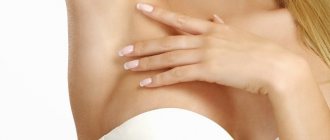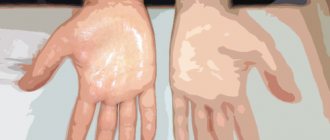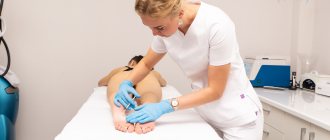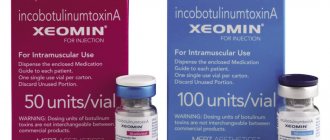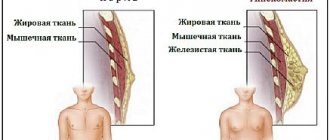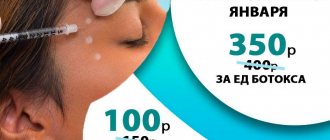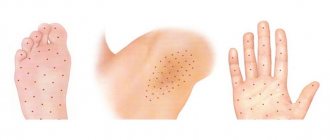Dermatovenereologist (cosmetologist)
Baichorova
Marua Azretovna
21 years of experience
Dermatologist (cosmetologist)
Make an appointment
Sweating is a natural mechanism formed during the process of evolution. Its primary function is body thermoregulation. Almost all mammals have sweat glands. When the body heats up, they are activated and release a specific liquid that cools the body during evaporation. Sweating is also involved in the process of removing excess water, metabolic products, salts and other substances through the skin. That is, this is a natural process, but for some people it proceeds too rapidly, even for no apparent reason. The phenomenon is called hyperhidrosis.
Normal sweating
Hyperhidrosis is not a disease, but rather an individual characteristic of the body, which causes a lot of trouble in everyday life. Normally, increased sweating is a common reaction to the following factors:
- temperature increase;
- physical exercise;
- stress;
- hot and spicy food;
- hormonal changes associated with menopause, pregnancy, puberty.
In addition, it can be a side effect when taking certain medications.
With little physical activity, a person produces about 0.5 liters of sweat per day, but as temperature and load increase, this volume can increase to 10 liters. Sweat glands respond to signals sent by the brain in two ways:
- increase or decrease the amount of sweat;
- open for active release of moisture, or close.
Types of hyperhidrosis
There are primary and secondary hyperhidrosis. The first is a permanent property of a person; it begins to manifest itself in childhood or adolescence, while the work of the sweat glands deviates from the norm. They may open too quickly or not close at all, causing increased sweating even in a cool room. The reason for this phenomenon still remains unclear.
The second develops in certain diseases. Among them:
- vegetative-vascular dystonia;
- tuberculosis;
- neurasthenia:
- syphilis;
- rheumatism;
- pathologies of the nervous system;
- diabetes;
- a sharp decrease in blood glucose levels;
- oncology;
- hyperthyroidism.
Statistics say that about 5% of people in the world suffer from primary hyperhidrosis, which is equally common in men and women, and secondary – about 15%. It manifests itself locally, only in certain places where the largest number of sweat glands accumulate (under the arms, on the feet, head, face, palms, groin), or generalized. And although this condition does not pose a threat to health, excessive hydration can have unpleasant consequences:
- local swelling, redness and inflammation;
- body hypothermia;
- psychoemotional disorders.
Are you experiencing symptoms of hyperhidrosis?
Only a doctor can accurately diagnose the disease. Don't delay your consultation - call
How much does laser treatment for hyperhidrosis cost?
Today, laser treatment of armpit hyperhidrosis is the most effective among all possible methods of getting rid of sweating. Almost all cosmetology clinics in Russia and many more widely targeted private institutions are equipped with appropriate equipment and can provide laser therapy services.
The cost of treatment depends not only on the professionalism of the surgeon, the reputation of the center and the conditions of the operation, but also on the region. The average price for laser treatment of hyperhidrosis in Moscow is about 40 thousand rubles. In other regions, the cost of laser treatment for hyperhidrosis is somewhat cheaper - about 25-30 thousand rubles.
The result of therapy largely depends on the qualifications of the surgeon, so we strongly recommend that you contact doctors who have not only the appropriate certificate, but also certain experience. First study the reputation of the clinic, its specialists, the conditions for the procedure, and then make an appointment.
Nowadays, you no longer have to spend a lot of time performing complex and unpleasant procedures at home. It is much easier to seek help from real professionals - the Veronika Herba beauty and health center, equipped with effective and modern equipment.
Why clients choose Veronika Herba beauty and health center:
- This is a beauty center where you can undergo laser treatment for hyperhidrosis at a reasonable cost, while your body will be treated by one of the best specialists in Moscow. This is a completely different, higher level of service!
- You can receive qualified help at any time convenient for you. The beauty center is open from 9:00 to 21:00, seven days a week. The main thing is to agree with your doctor in advance on the date and time of your appointment.
Sign up for a consultation with a specialist by phone +7 (495) 085-15-13
, and you will see for yourself!
Which doctor should I contact? Diagnostics
If you have hyperhidrosis, you should first consult a therapist, who can refer the person for further consultation to the following specialists:
- a dermatologist if there are signs of dermatosis and inflammation of the sweat glands;
- to a neurologist if autonomic disorders are suspected;
- an endocrinologist to rule out diabetes mellitus and thyroid dysfunction;
- cardiologist, for angina pectoris;
- an orthopedist, since sweating of the feet often accompanies flat feet;
- a psychotherapist if the problem is psychological in nature.
In order to determine the degree of hyperhidrosis and areas of increased sweating, the Minor test is used. Take a 2% iodine solution, apply it to the skin area under study, dry it and sprinkle with starch. If sweating exceeds the norm, the skin turns purple and sometimes black. These areas are then marked for subsequent treatment.
Preparation
Depending on the processing location, the following types of preparation are required:
- Armpits. The day before the procedure, you need to shave your hair;
- Feet. If there are calluses or hyperkeratosis, excess hardened skin should be removed a few days before your visit to the clinic.
A week before the procedure, it is recommended to stop using special antiperspirants with aluminum salts. You should refrain from drinking alcohol for 2-3 days.
Important! Regardless of the treatment area, at least a week (or preferably two) before the procedure, you should not take medications that affect blood clotting.
Minor's sample
Injections should only be performed by a cosmetologist in a clinic setting. This is a general rule for all injection procedures.
First, the doctor will conduct an examination and collect anamnesis to identify contraindications. After this, the Minor test is performed. This is a completely painless test. The skin is first treated with an iodine solution, and after it dries, it is powdered with starch to stimulate sweat production. Areas with hyperfunction of the sweat glands turn dark purple or black. It is in this area that the injections are performed.
The sample is used if necessary and to assess the effectiveness of treatment. The stained areas are not visible after the test for several months. Then, as the glands restore their function, colored areas appear, and they gradually become more numerous - unless, of course, the cause of hyperhidrosis has not been eliminated.
How to treat hyperhidrosis
If secondary hyperhidrosis is diagnosed, the underlying disease should be treated to eliminate it. In the case of primary, general tonic agents are often prescribed; it is also recommended to use disinfecting and skin-drying powders and strong antiperspirants. Sometimes treatment with a psychotherapist is also required. If the above methods do not produce results, more serious therapy is recommended.
Iontophoresis
This method has proven itself well for hyperhidrosis of the palms and feet. To do this, the hands and feet are immersed in warm water, through which a weak electrical discharge is passed. There are no painful sensations. To noticeably reduce sweating, two to four procedures of half an hour are enough.
Botox or Dysport
These drugs containing botulinum toxin are widely used in cosmetology to remove wrinkles on the face, due to their ability to block neuromuscular transmission. They have also proven effective in treating hyperhidrosis. They are injected into areas of increased sweating to block the nerve endings that activate the sweat glands. Usually several injections are required, but they last for a certain period (about six months), after which the course will have to be repeated.
Anticholinergic drugs
These drugs are widely used in the treatment of Parkinson's disease and spastic paralysis. It turned out that they also help with hyperhidrosis by blocking nerve impulses sent to the sweat glands. A positive effect occurs two weeks after starting to take medications, but they should be taken with caution in case of hypertension, atherosclerosis, problems with the heart, liver and kidneys.
Endoscopic sympathectomy
When previous methods do not produce results, you can decide on surgery - endoscopic sympathectomy, in which the surgeon removes the nerves that conduct electrical signals to the sweat glands. This method can only be used for hyperhidrosis of the palms, armpits and face, and it also has many contraindications.
Possible complications after laser treatment of hyperhidrosis and contraindications
Some patients notice enlarged lymph nodes after surgery. This is possible if the lymphatic system was affected during the procedure. This complication goes away within a month.
Sometimes there is a decrease in skin sensitivity in the armpits. This is a reversible reaction caused by the destruction of nerve endings by a laser scalpel.
The lack of effectiveness of such treatment for hyperhidrosis in some cases can be explained by the anatomical features of the body, which is capable of partially restoring the destroyed sweating system. In such cases, symptoms return a few weeks after surgery.
If a specialist prescribes laser treatment for excessive sweating, there is no need to refuse: this therapy is not dangerous, painless, and the positive result will be dry armpits and feet, which will no longer cause an unpleasant odor.
To avoid serious negative consequences, contraindications to the procedure should be taken into account.
The main contraindications for laser treatment of sweating include:
- Age up to 18 years.
- Inflammatory processes of the sweat or sebaceous glands in the area of interest.
- Dermatological diseases, allergic rashes in the intended area of influence.
- Acute infections.
- Oncological diseases.
- Diabetes mellitus in the stage of decompensation.
- Blood diseases, bleeding disorders.
- Pregnancy and lactation period.
- Regular use of certain medications (to reduce blood clotting, steroid hormones, and drugs with a photosensitizing effect).
Components included in medications can provoke the occurrence of photosensitivity. A list of such drugs can be found in open medical publications. Some of the most common in this category are antibiotics, anti-inflammatory drugs, and hormonal contraceptives.
Read material on the topic:
Manual therapy of the cervical spine as a worthy replacement for alternative treatment
Hyperhidrosis in children
A child's sweat glands are activated from the 3-4th week of life, but they will become fully operational only by the age of 5-6 years. Due to incomplete formation, the body can react to various stimuli with a violation of thermoregulation. A fun game, prolonged crying, too dry air in the apartment, even evening breastfeeding can cause perspiration on the forehead. And that's okay. It is only important to ensure a comfortable ambient temperature:
- for newborns – 23-24 °C;
- for children 1–6 months – 20–22 °C;
- for children from 6 months to 1 year – 19-20 °C;
- for children over one year old – 17–19 °C.
The apartment should also maintain high air humidity, about 70%.
But sometimes parents may experience increased sweating in their child while sleeping in a rather cool room. There may be several reasons for this:
- Vitamin D deficiency and rickets. In this case, increased sweating is observed on the head, neck, palms, feet, and armpits. At the same time, sweat has a sour smell, it is sticky, and its secretion increases during sleep;
- heart failure. Hyperhidrosis in a child can be observed with congenital heart abnormalities, in addition to this, there is cyanosis of the skin, general lethargy and weakness, and slow weight gain;
- viral or bacterial infections;
- helminthic infestation;
- genetic diseases phenylketonuria and cystic fibrosis;
In adolescence, hormonal changes in the body begin, so nocturnal hyperhidrosis occurs quite often during this period. Over time, the work of the sweat glands normalizes.
Folk remedies for hyperhidrosis
Before deciding on radical therapy, you should try traditional methods of combating hyperhidrosis. The most popular and effective is a decoction of oak bark. In addition to the fact that it helps normalize the functioning of the sweat glands, it also has a bactericidal effect. The decoction is prepared according to the instructions on the package. It should be used as a lotion on problem areas after taking a shower for 20 minutes. You can store it for several days in the refrigerator.
It is useful to wipe areas of excessive sweating with a cotton swab dipped in apple cider vinegar. It is recommended to do this as often as possible during the day, and a compress for 10 minutes before bed will not hurt. For hyperhidrosis in men and women, a contrast shower in the morning and evening is useful. A sharp change in temperature teaches the sweat glands not to react so violently to temperature changes.
How does botulinum toxin work?
Botulinum toxin is a toxic substance that affects the nervous system. Eating it is extremely dangerous, but in the form of injections the toxin is successfully used in medicine. The toxin is well purified and not hazardous to health. Microdoses of botulinum toxin help relax not only muscles, in order to remove constipation and wrinkles, but are also used to treat migraines and eliminate excessive sweating. Botulinum toxin blocks the transmission of nerve impulses to the sweat glands, as a result, sweat production stops (effectiveness of treatment with botulinum toxin).
The effect lasts for a long time, and then the functions of the sweat glands are gradually restored. In this case, repeated injections are required.
Prevention
If you are prone to excessive sweating, it is recommended not to consume excessive amounts of alcohol, caffeine and nicotine, which stimulate the sweat glands. It is also recommended not to wear clothes made of synthetic fabrics, but to choose loose-fitting models that do not hug your figure.
If your feet sweat excessively, you should wear shoes and socks made from natural materials that absorb moisture well. However, they should always be worn under closed and sports shoes.
People suffering from hyperhidrosis have to shower more often than others and use stronger antiperspirants, which reduce the amount of sweat produced.
It is also recommended to pay attention to whether there are any side effects in the form of increased sweating from medications prescribed by doctors. Perhaps there is an alternative.
And most importantly: you need to learn to resist stress and control your emotions. Consultations with a psychotherapist, as well as various psychological practices, can help with this.
What examination is needed?
If you have excessive sweating, you need a dermatologist, and if you have hyperhidrosis of the feet, you need a podiatrist. To find out the type and causes of hyperhidrosis, the doctor will definitely conduct an examination before treatment. If necessary, he will refer you to a neurologist or other specialized specialists.
Answering the following questions will help you determine the type of hyperhidrosis:
- Does sweating happen for no apparent reason?
- Is it the same on both sides of the body?
- How does it affect quality of life?
- How often do episodes of excessive sweating occur?
- When did the first symptoms appear?
- Do relatives have this problem?
- Do you sweat during night sleep?
Special functional tests have been developed to assess the degree of hyperhidrosis. They are used to determine the amount of sweat secreted, the intensity of sweating, and find the places on the body where it is most pronounced. Most tests have no practical diagnostic value. They are used for scientific research or to evaluate the effectiveness of treatment.
These methods include:
- calculation of body weight loss over a certain time;
- absorption of sweat from the skin or in special chambers by various absorbers;
- measurement of skin surface resistance, which changes depending on the intensity of sweating;
- provocative tests with the introduction of substances that stimulate or inhibit sweating;
- tests using substances that can change color when combined with sweat (iodine-starch test).
In case of secondary hyperhidrosis, the doctor will ask you in detail about your health status. He will prescribe blood and urine tests, hormonal tests, and measure blood pressure to find the true cause. If you have a chronic illness or are taking any medications, tell your doctor.
